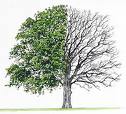Stave Oak Tree Information
Images of Stave Oak:






Stave Oak grows in the following 35 states and provinces:
Alabama, Arkansas, Connecticut, Delaware, Florida, Georgia, Illinois, Indiana, Iowa, Kansas, Kentucky, Louisiana, Maine, Massachusetts, Michigan, Minnesota, Mississippi, Missouri, Nebraska, New Hampshire, New Jersey, New York, North Carolina, Ohio, Oklahoma, Ontario, Pennsylvania, Rhode Island, South Carolina, Tennessee, Texas, Vermont, Virginia, West Virginia, WisconsinInformation about Stave Oak:
The Quercus Alba is commonly known as the Fork-leaf Oak, Forked-leaf White Oak, Ridge White Oak, Stave Oak as well as White Oak.
The currently accepted scientific name of white oak is Quercus alba L. . It is a member of the order Fagales and has been placed within the white oak subgenus (Lepidobalanus) . Three varieties of white oak are commonly recognized : Quercus alba var. alba Quercus alba var. repanda Michx. Quercus alba var. latiloba Sarg. Some authorities recognize these entities as forms rather than varieties . White oak is highly variable genetically , and many forms and ecotypes have been described. According to Fowells , "no definite races have been defined, but within such a tremendously diverse habitat, climatic races undoubtedly exist." White oak readily hybridizes with many other species within the genus Quercus , including swamp white oak (Q. bicolor), bur oak (Q. macrocarpa), chinkapin oak (Q. muehlenbergi), dwarf chinkapin oak (Q. prinoides), overcup oak (Q. lyrata), swamp chestnut oak (Q. michauxii), sandpost oak (Q. margaretta), chestnut oak (Q. prinus), English oak (Q. robur), Durand oak (Q. durandii), and post oak (Q. stellata) . Hybrids, their common names, and purported origins are listed below . Beadle oak X beadlei Trel. (Quercus alba x michauxii) Bebb oak X bebbiana (Q. alba x Q. macrocarpa) X bimundorum Palmer (Q. alba x Q. robur) Deam oak X deamii (Q. alba x Q. muehlenbergi) Faxon oak X faxonii Trel. (Q. alba x Q. prinoides) Fernow oak X fernowii Trel. (Q. alba x Q. stellata) Jack oak X jackiana Schneid. (Q. alba x Q. montana) Saul oak X saulii Schneid. (Q. alba x Q. prinus) Saul oak was formerly known as Q. alba f. ryderii but is now considered a heterozygous hybrid form of white oak . Introgressive populations are locally common throughout much of the range of white oak. Hybrid swarms derived from complex mixtures of parental forms are particularly common on disturbed sites, at the margins of white oak's range, and where several oak species occur sympatrically .White oak grows throughout much of the eastern United States from southwest Maine to northern Florida, Alabama, and Georgia . It extends westward throughout southern Ontario and Quebec into central Michigan, northern Wisconsin, and southeastern Minnesota and south to southwestern Iowa, eastern Kansas, eastern Oklahoma, and eastern Texas . Little reported that white oak may have been eliminated from southeastern Nebraska. The best growing conditions for white oak occur on the western slope of the Appalachian Mountains and in the Ohio Valley and central Mississippi Valley . White oak is mostly absent from conifer-dominated stands at higher elevations within the Appalachian Mountains and from the lower Mississippi Delta and coastal areas of Texas and Louisiana . The variety latiloba occurs at the northern edge of the species' range . The range of var. repanda is poorly documented, but it has been reported in parts of New England .White oak grows as a dominant in many communities and as a major species in several cover types . Common codominants within the overstory include northern red oak (Quercus rubra), scarlet oak (Q. coccinea), northern pin oak (Q. ellipsoidalis), black oak (Q. velutinus), beech (Fagus spp.), sweetgum (Liquidambar styraciflua), chestnut (Castanea dentata), red maple (Acer rubrum), sugar maple (A. saccharum), and hickories (Carya spp.). Understory dominants or codominants include deerberry (Vaccinium stamineum), leadplant (Amorpha canescens), trailing arbutus (Epigaea repens), huckleberries (Gaylussacia spp.), meadow-rue (Thalictrum spp.), and false Solomon's-seal (Smilacina racemosa). Published classifications listing white oak as an indicator or dominant in habitat types (hts) are presented below: Area Classification Authority AL general veg. cts Golden 1979 s IL general veg. cts Fralish 1976 IN general veg. cts Keith 1983 ne IA general veg. cts Cahayla-Wynne & Glenn-Lewin 1978 MI general veg. cts Hammitt and Barnes 1989 general veg. eas Pregitzer and Ramm 1984 n MI, ne WI forest hts Coffman and others 1980 sw OH general veg. cts Braun 1936 e TN general veg. cts Martin and DeSelm 1976 n WI forest hts Kotar and others 1988 Smoky Mtns general veg. cts Whittaker 1956Some of the information provided here is attributed to:Tirmenstein, D. A. 1991. Quercus alba. In: Fire Effects Information System, [Online]. U.S. Department of Agriculture, Forest Service, Rocky Mountain Research Station, Fire Sciences Laboratory (Producer). , available at the USDA Fire Effects Information System (FEIS) website